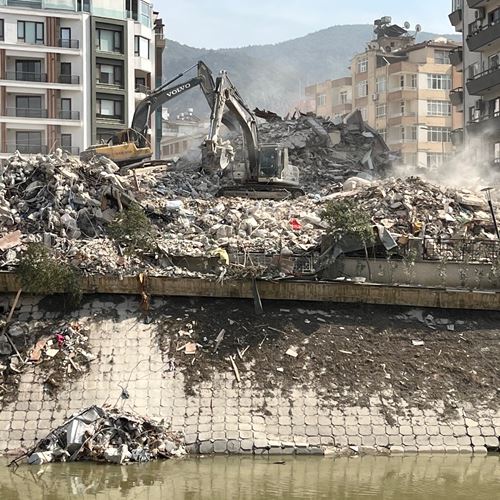On February 6, 2023, two large scale earthquakes hit near the Türkiye-Syrian border striking in communities where millions had already been displaced by the decade long crisis in Syria. This deadly earthquake levelled several towns and killed more than 50,000 people in Turkey, and more than 6,000 in Syria, and left millions homeless.
One year after this tragic event, significant challenges in safe shelter and access to basic needs and services continue to highlight the vulnerability of those impacted. The urgency of finding sustainable solutions for recovery and rebuilding is paramount.
Across several provinces in Türkiye impacted by the earthquake, a total of 478,736 individuals are residing in government emergency camps. There are 354,904 people residing in spontaneous settlements. These shelters outside of government camps vary from makeshift tents to simple container dwellings.
The affected areas are still facing huge problems
Access to safe shelter, basic necessities, and services remains a significant challenge. Local authorities anticipate the completion of only 150,000 residential units by the end of 2024. Consequently, numerous households are likely to reside in temporary shelter units for the forthcoming years.
These units, especially those in spontaneous settlements, are vulnerable to violent weather events, including heavy rainfall and extreme heat. Households affected continue to experience frequent disruptions due to damage caused by these events, underscoring the urgent need for sustainable solutions in recovery and rebuilding efforts.
“The disaster has had a profound socioeconomic impact, particularly on small businesses, local farmers, and workers, who confront substantial challenges. Additionally, there has been an increase in harmful coping strategies among affected populations. This includes a heightened reliance on high-risk employment and a concerning trend towards child marriages”, says Nicolas Metri, Head of Programme for DRC Türkiye.
Violence, exploitation, and child labor are alarmingly widespread
The earthquakes have hindered educational access for approximately 4 million children. This includes over 350,000 children who are refugees or migrants. A considerable number of children in the areas impacted by the earthquakes, especially refugees, have yet to resume their schooling. Financial difficulties, transportation issues, and concerns about the safety of school buildings are commonly mentioned as barriers.
“Protection issues such as violence, exploitation, and child labor are alarmingly widespread among the population in the affected areas. These issues highlight the critical necessity for comprehensive interventions to address these urgent concerns and support the affected communities on their path to recovery and stability”, says Nicolas Metri.
